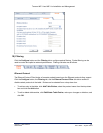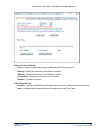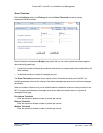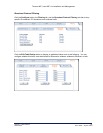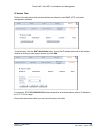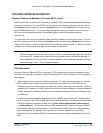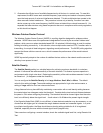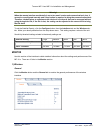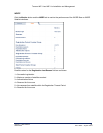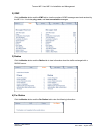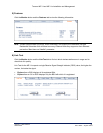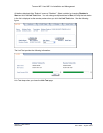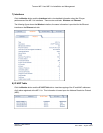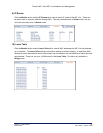
Tsunami MP.11and MP.11a Installation and Management
2. Guarantee the efficient use of available frequencies by all devices in a certain area. To meet this
requirement, the BSU scans each available frequency upon startup and selects a frequency based
upon the least amount of noise and interference detected. This lets multiple devices operate in the
same area with limited interference. This procedure is done only at startup; if another non-radar
device comes up on the same frequency, the BSU does not detect this or reboot because of it. It is
expected that other devices using these frequencies also are in compliance with country regulations,
so this should not happen.
Wireless Outdoor Router Protocol
The Wireless Outdoor Router Protocol (WORP) is a polling algorithm designed for wireless outdoor
networks. WORP takes care of the performance degradation incurred by the so-called “hidden-node”
problem, which can occur when standards-based 802.11b wireless LAN technology is used for outdoor
building-to-building connectivity. In this situation, when multiple radios send an RTS, if another radio is
transmitting, it corrupts all data being sent, degrading overall performance. The WORP polling algorithm
ensures that these collisions cannot occur, which increases the performance of the overall network
significantly.
WORP dynamically adapts to the number of satellites that are active on the network and the amount of
data they have queued to send.
Satellite Density
The Satellite Density setting is a valuable feature for achieving maximum bandwidth in a wireless
network. It influences the receive sensitivity of the radio interface. This feature improves operation in
environments with a high noise level. Reducing the sensitivity of the radio enables unwanted “noise” to
be filtered out. (It disappears under the threshold.)
You can configure the Satellite Density to be Large, Medium, Small, Mini, or Micro. The default
value for this setting is Large. The smaller settings are appropriate for high noise environments; a
setting of Large would be for a low noise environment.
A long distance link may have difficulty maintaining a connection with a small density setting because
the wanted signal can disappear under the threshold. Consider both noise level and distance between
the peers in a link when configuring this setting. The threshold should be chosen higher than the noise
level, but sufficiently below the signal level. A safe value is 10 dB below the present signal strength.
If the Signal-to-Noise Ratio (SNR) is not sufficient, a lower data rate selection may be necessary, or use
of antennas with higher gain to increase the margin between wanted and unwanted signals. In a point-
to-multipoint configuration, the Base should have a density setting suitable for all of its registered
Satellites, especially the ones with the lowest signal levels (longest links).
Take care when configuring a remote interface; check the available signal level first, using Remote Link
Test.
Chapter 5. Web Interface 68
CPN 65755 Issue Date: August 2003




